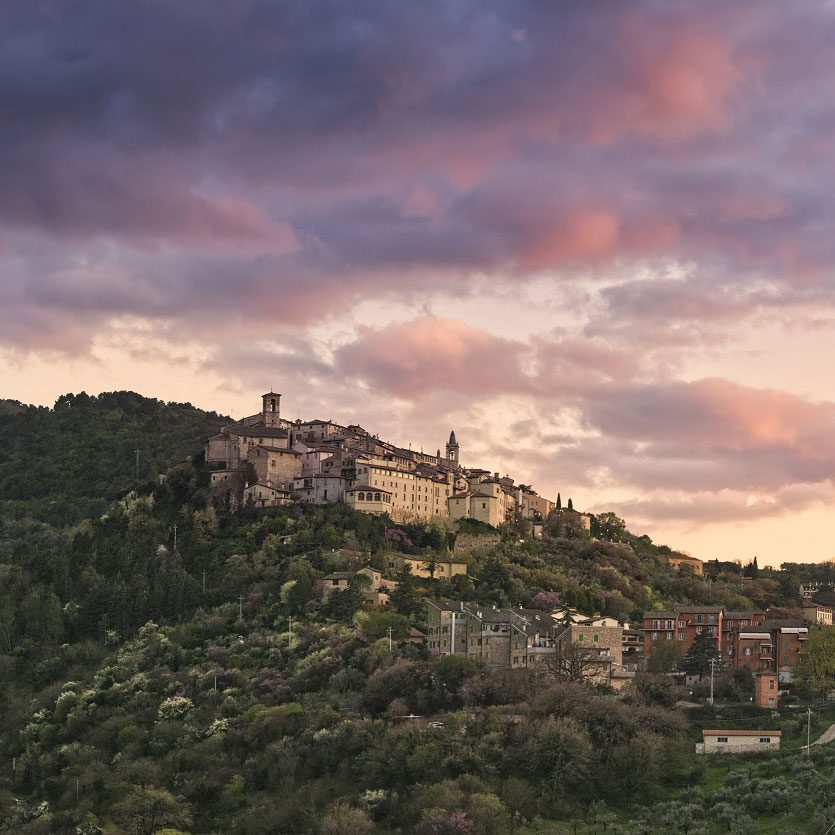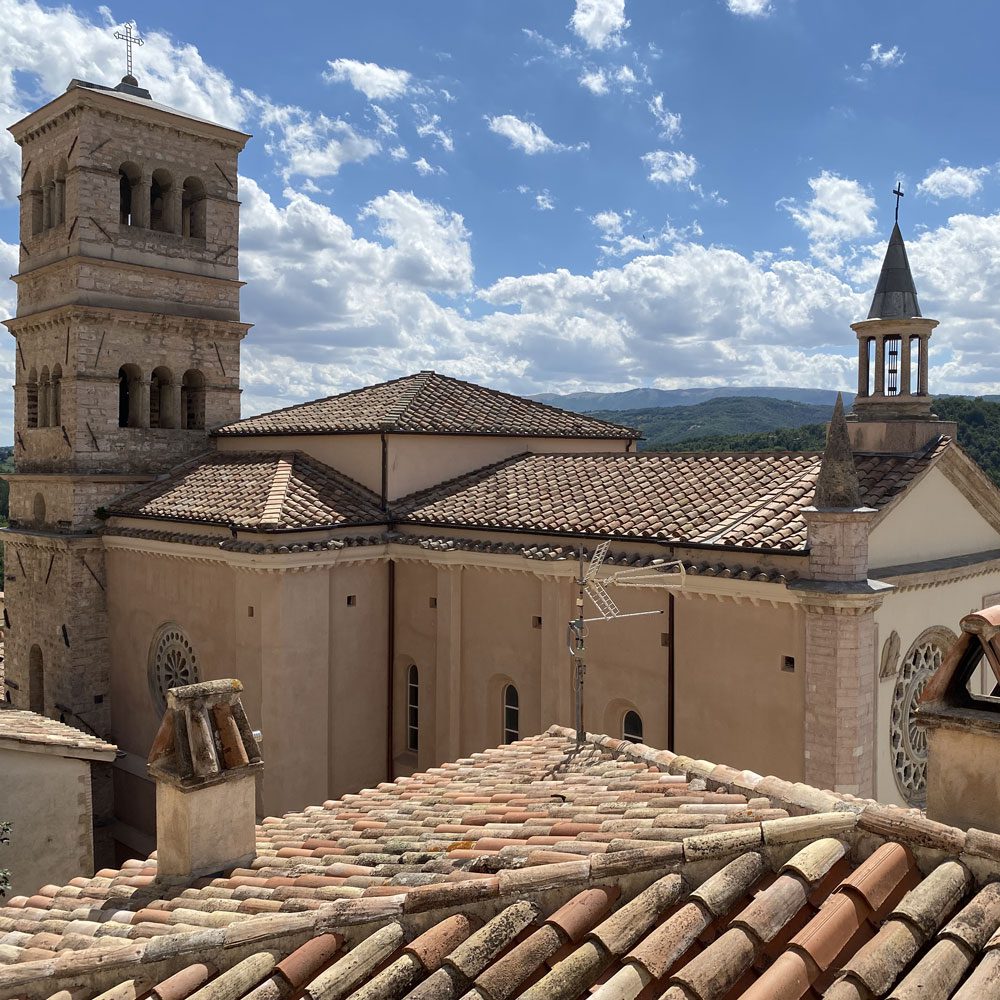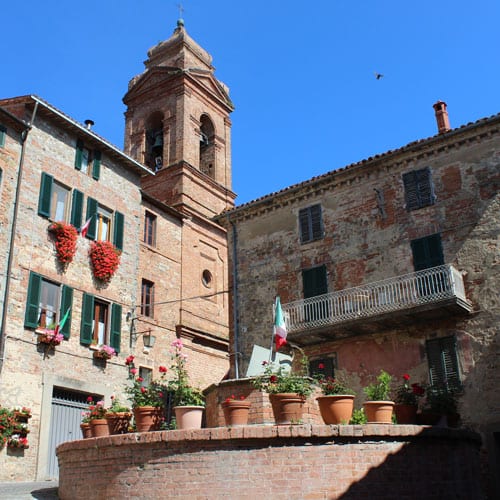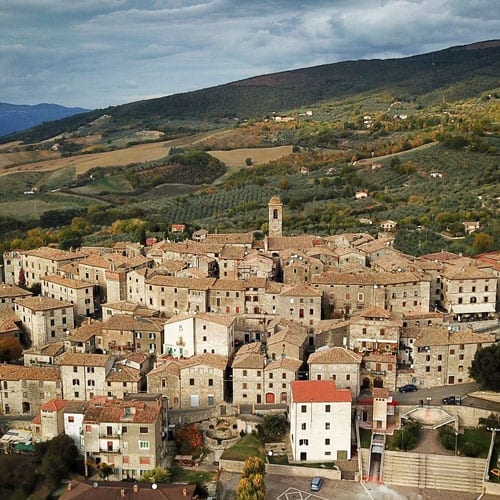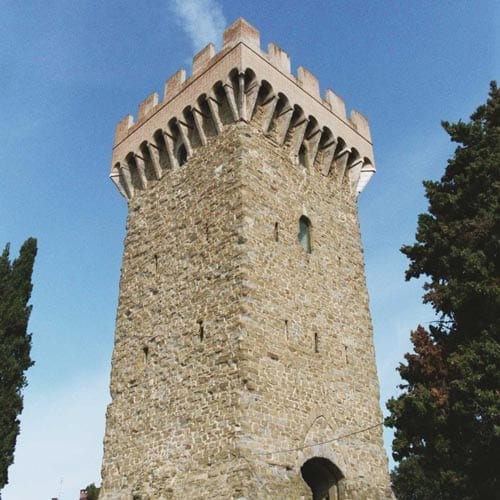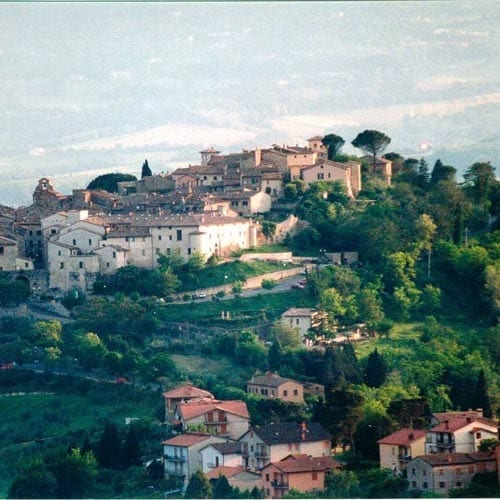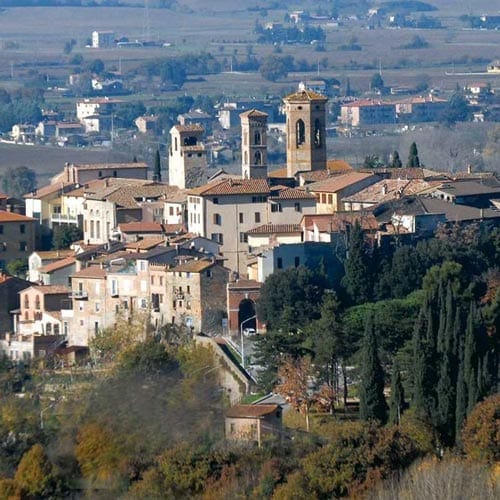 Monteleone di Spoleto
Monteleone di Spoleto
MUNICIPALITY OF MONTELEONE DI SPOLETO
(Perugia District)
Altitude
m. 978 a.s.l.
POPULATION
636
tourist information
Valnerina IAT Office, Ph. 0743 71401
info@lavalnerina.it
www.comune.monteleonedispoleto.it
www.lavalnerina.it
 On the promontory where the castle stands, the Lombard dukes of Spoleto placed the centre of the Gastaldato Equano. In 1265 the noble Tiberti of Arrone family rebuilt the Mons Leonis fortress on the ruins of the Brufa fortress, built in 880 by Attone, lord of the Black Valley. Devastated by the Saracens, the fortress was destroyed by Frederick II of Swabia in 1228.
On the promontory where the castle stands, the Lombard dukes of Spoleto placed the centre of the Gastaldato Equano. In 1265 the noble Tiberti of Arrone family rebuilt the Mons Leonis fortress on the ruins of the Brufa fortress, built in 880 by Attone, lord of the Black Valley. Devastated by the Saracens, the fortress was destroyed by Frederick II of Swabia in 1228.
The borgo rises on a hill that dominates the Corno river valley. Here the hedgerows mark the boundaries of small plots of land planted with spelt. The territory, inhabited since the Bronze Age, became a possession of the Romans, then of the Lombards and, later, an outpost on the border between the Papal State and the Kingdom of Naples. The strategic position of Monteleone derives from the presence of ancient communication routes: the one to the north led to Norcia, the one to the south led to Leonessa, the road to the east to Salaria and to the valley of the Tronto river. In the 17th century, these routes were joined by the Iron Route and were used to transport the mineral extracted from the mines of Monte Birbone to Val Casana and to the lower Valnerina.
In 1902, inside the necropolis that came to light with 44 tombs at Colle del Capitano, a 6th century B.C. Etruscan chariot was found, now on display at the Metropolitan Museum in New York and, in copy, at the Museo della Biga in Monteleone.
In the fourteenth century the castle was involved in the clashes between the Guelphs and Ghibellines and, until the sixteenth century, in the fights between the neighboring municipalities. The castle acquired autonomy in 1560 by concession of Pope Pius IV. In 1634 the exploitation of iron mines on the slopes of Mount Birbone began thanks to Pope Urban VIII, leading to the annexation of Monteleone to the Kingdom of Italy in 1860. The lignite mine in Ruscio was active in the first twenty years of the twentieth century.
Of the second circle of walls that surrounded the borgo in the fifteenth century, some considerable stretches and some defensive towers have remained. Through the Spoletina access door, with its ogival arch, you’ll enter the main street overlooked by elegant noble buildings built between the sixteenth and eighteenth centuries. To the west of the city walls is Porta San Giacomo and to the east Porta delle Monache, next to the church of Santa Caterina. On the highest part of the borgo you can see the church of San Nicola. Today, only some sections of the walls of the original Brufa fortress and the tower remain, which was later equipped with a clock and with the entrance door that leads to the Market Square. On the left you can see the majestic portal of the church of San Francesco, built in 1280 on the ancient Benedictine church of Santa Maria.
In front of the borgo you can admire the mountains that surround the Leonessa plateau, with the main peaks of Cambio and Tila. From Mons Fiscellus, writes Pliny, flows the Naahr, the ancient Horn, which flows through the forests of Valnerina already sacred to the goddess Vacuuna.
The church of San Francesco at the end of the fourteenth century was divided in height by robust vaults. The lower church has two naves: the central one has an 18th century coffered ceiling. Among the works of art here preserved: a wooden statue of St. Anthony the Abbot, a fresco of the early fifteenth century depicting the Madonna del Voto, the Baroque altar dedicated to St. Felix.
In the complex of San Francesco a copy,, of the Etruscan biga (VI century B.C.) made by the foundry of Giacomo Manzù, is preserved . It is made of walnut wood, covered with bronze foils, with the rudder protruding from the jaws of a wild boar and the head of a bird. The chariot is composed of a triptych of panels that shows the warrior’s ideal of life: initiation with the surrender of weapons; glorious combat; the final apotheosis that makes the hero a demigod.
Strascinati, a typical home-made pasta, a mixture of flour, water and salt, hand shaped in the form of spaghetti. A festival is dedicated to this dish in August.




